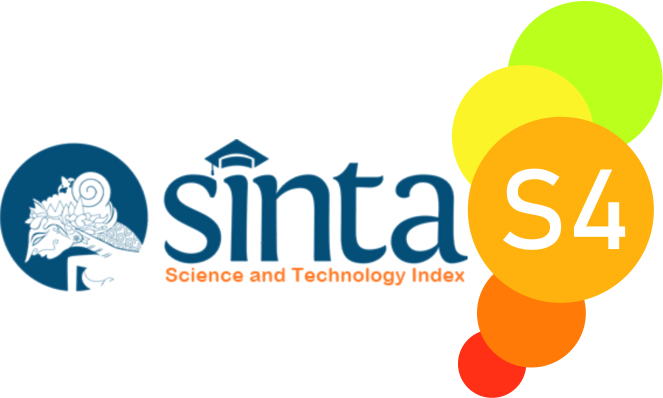Comparison of Learning Outcomes of Students Who Stayed in Bengkulu City with Kepahiang District in Following the 3 in 1 Division Batik in BDI Padang
 ), Syuraini Syuraini(2),
), Syuraini Syuraini(2), (1) Universitas Negeri Padang
(2) Universitas Negeri Padang
 Corresponding Author
Corresponding Author
DOI : https://doi.org/10.24036/spektrumpls.v8i2.109125
Full Text:
 Language : en
Language : en
Abstract
Non-formal education programs can be carried out by families, communities, or governments. Padang Industrial Training Center is a form of a government institution that organizes non-formal education programs, Padang Industrial Training Center has the duty to improve and provide knowledge and training in the field of embroidery and fashion to the people of West Sumatra Province and outside West Sumatra. Padang Industrial Training and Education Center has many programs in the field of embroidery and fashion, one example of the program is education and training in batik 3 in 1. This study aims to determine the comparison of learning outcomes of training participants who live in Bengkulu City with those who live in Kepahiang Regency in participating in a 3 in 1 batik training program at BDI Padang. This type of research is Comparative Causal. The population in this study were training participants who participated in the 3 in 1 written batik training in class IX and class XIII in 2019, amounting to 134 people. The sample in this study amounted to 68 people using stratified-cluster random sampling techniques. Data collection techniques used are observation and documentation. The data analysis technique used is descriptive quantitative. Analysis of the data used quantitatively using a t-test using SPSS 24 software. Based on the results of the study the learning outcomes of Bengkulu City training participants at most with excellent criteria, namely 20 people (58.8%) and as many as 14 people on good criteria, the learning outcomes of the Kepahiang City training participants at most with very good criteria, namely 30 people (88, 2%) and as many as 4 people (11.8%) criteria are good and there are differences in learning outcomes between students who live in cities and training participants who live in districts in participating in 3 in 1 education and training at Padang BDI, meaning that the hypothesis Ha is accepted. It is recommended for the Department of non-school education of Padang State University to be able to make the results of this study as a reference in teaching materials on education and training in various regions.
Keywords: Learning Outcomes of Education and Training, Bengkulu City, Kepahiang District
References
Azwar, S. (2013). Sikap Manusia: Teori dan Pengukurannya. Yogyakarta: Pustaka Pelajar.
Dalyono. (2010). Psikologi Pendidikan. Jakarta: Rineka Cipta.
Djaali. (2014). Psikologi Pendidikan. Jakarta: Bumi Aksara.
Farisy, S. (2013). Pengaruh Pendidikan dan Pelatihan terhadap Kinerja Karyawan pada PT. PP London Sumatra Indonesia Tbk. Universitas Iba Palembang.
Hery, L. (2013). Batik. Yogyakarta: Graha Ilmu.
Hidayat, H., & Nurasyiah, N. (2017). Pengaruh Diklat (Pendidikan dan Pelatihan) terhadap Prestasi Kerja Karyawan di BANK BPR Rokan Hulu. Jurnal Cano Ekonomos, 6(1), 71–82. Retrieved from https://e-journal.upp.ac.id/index.php/Cano/article/view/1241
Hidayati, A., Bentri, A., & Sunarti, V. (2019). Analisis Kebutuhan Pelatihan Pembuatan Bahan Ajar Berbasis Teknologi Informasi Bagi Guru SD di Kabupatan Padang Pariaman. SPEKTRUM: Jurnal Pendidikan Luar Sekolah (PLS), 2(3), 288–293. https://doi.org/10.24036/spektrumpls.v2i3.106240
Iskandar, Z. (2012). Psikologi Lingkungan: Teori & Konsep. Bandung: PT Refika Aditama.
Kamil, M. (2012). Model Pendidikan dan Pelatihan: Konsep dan Penerapannya. Bandung: Alfabeta.
Monawati, M., & Fauzi, F. (2018). Hubungan Kreativitas Mengajar Guru dengan Prestasi Belajar Siswa. Jurnal Pesona Dasar, 6(2), 33–43. https://doi.org/10.24815/pear.v6i2.12195
Mujiman, H. (2007). Manajemen Pelatihan Berbasis Belajar Mandiri. Yogyakarta: Pustaka Pelajar.
Presiden Republik Indonesia. Undang-Undang Republik Indonesia Tentang Sistem Pendidikan Nasional, Pub. L. No. 20 (2003). Indonesia. Retrieved from https://www.unpad.ac.id/wp-content/uploads/2012/10/UU20-2003-Sisdiknas.pdf
Rusmono. (2014). Strategi Pembelajaran dengan Problem Based Learning. Bogor: Ghalia Indonesia.
Safitri, V., & Syuraini, S. (2019). Gambaran Motivasi Warga Belajar Pelatihan Keterampilan Menyulam Selendang Koto Gadang di PKBM Anarvani Padang. JFACE: Journal of Family, Adult, and Early Childhood Education, 3(1), 442–448. https://doi.org/10.5281/zenodo.3732087
Santoso, D. (2002). Batik: Pengaruh Zaman dan Lingkungan. Solo: Danar Hadi.
Sardiman. (2012). Interaksi dan Motivasi Belajar Mengajar.
Sesti, J., & Syuraini, S. (2018). Gambaran Motivasi Warga Belajar Mengikuti Pelatihan Menjahit di PKBM Nurul Hidayah Kecamatan Kamang Magek Kabupaten Agam. SPEKTRUM: Jurnal Pendidikan Luar Sekolah (PLS), 1(4), 449–455. https://doi.org/https://doi.org/10.24036/spektrumpls.v1i4.101743
Sudjana, D. (2007). Sistem dan Manajemen Pelatihan. Bandung: Publishing.
Tu’u, T. (2004). Peran Disiplin pada Perilaku dan Prestasi Siswa. Jakarta: PT Gramedia Widiasarana Indonesia.
Uno, H. B. (2012). Teori Motivasi & Pengukurannya. Jakarta: Bumi Aksara.
Vito, B., Krisnani, H., & Resnawaty, R. (2016). Kesenjangan Pendidikan Desa dan Kota. RISET & PKM, 2(2), 2442–4480.
Wirdayani, N., & Syuraini, S. (2020). Hubungan Motivasi Belajar dengan Disiplin Warga Belajar dalam Mengikuti Pelatihan Menjahit di PKBM Anarvani Kota Padang. Jurnal Halaqah, 2(3), 259–269. https://doi.org/10.5281/zenodo.3880799
 Article Metrics
Article Metrics
 Abstract Views : 182 times
Abstract Views : 182 times
 PDF Downloaded : 70 times
PDF Downloaded : 70 times
Refbacks
- There are currently no refbacks.

This work is licensed under a Creative Commons Attribution-NonCommercial 4.0 International License.



